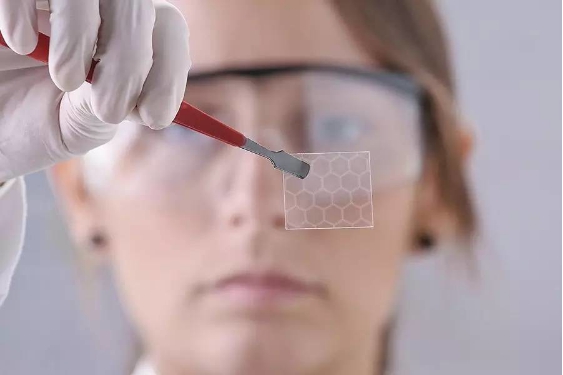Release date: 2016-03-28
The reporter learned today from the Chongqing Municipal Government that experts from the Comprehensive Experimental Research Center of the Southwest Hospital of the Third Military Medical University discovered for the first time that graphene contributes to the early diagnosis of tumors, which is of great significance for the early treatment of tumors.
The research results were published in the international journal Analytical Chemistry, titled "Graphene-integrated DNAase signal amplification technology to achieve non-invasive detection of early tumors."
At present, commonly used tumor detection methods include B-ultrasound, X-ray, and CT. However, conventional B-mode and X-ray examinations have limited sensitivity, and CT and the like are radioactive, so they are not suitable for early screening of tumors in the general population. The detection of tumor markers in body fluids (such as blood, urine, and saliva) is currently the most ideal early non-invasive screening method in clinical practice, but existing protein body fluid tumor markers such as CA199 and CA125 are often developed in tumors. A more mature stage will occur, and it is more difficult to treat it at this time.

(Graphene is increasingly valued by the industry)
"This requires us to find the detection target from an earlier molecular level in the early stage of abnormality in the body." Qiu Xiaopei, the first author of the paper, said that when the microbial biomarker microRNA is abnormal in the body, its content will also follow. This change has important value in predicting the prognosis. Qiu Xiaopei, the first author of the paper, said that after repeated trials, the team found that microRNAs, cmicroRNAs, were present in serum, urine and saliva.
However, the problem is that, although it exists, in the early stage of the tumor, the cmicroRNA released by the body to the blood and urine is extremely small, and the conventional conventional nucleic acid detection method is difficult to detect.
Qiu Xiaopei put his gaze on DNAase, a specific nuclease that amplifies the detection signal by "infinite loop digestion". The prerequisite for this amplification is that there are a large number of probes. They innovatively introduced graphene with high adsorption, and the number of probes for capturing cmicroRNA increased by about 10 times, which greatly improved the sensitivity of detection and finally captured cmicroRNA.
Qiu Xiaopei explained that it is possible to analyze whether the body is cancerous or not, and it is of great value in improving the early diagnosis and prognosis of clinical tumors. At present, the research has entered the research phase of the kit and is expected to be applied to the clinic within two or three years.
(Original title: Southwest Hospital experts first discovered that graphene contributes to early diagnosis of tumors)
Source: Yangguang Network
YT-H706
YT-H706
Shenzhen Sunshine Technology Co.,Ltd , https://www.yatwin.com